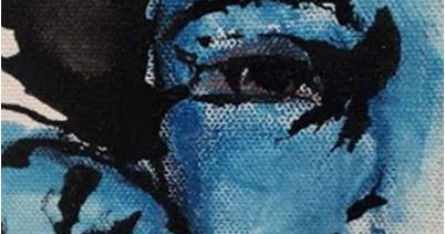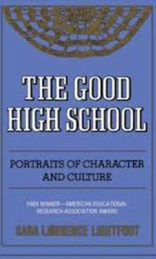Portraits
Portrait of an Institution
Intimate Portrait Human Archaeology Portrait of a Concept Portrait of a Relationship Portrait of a Developmental Stage Portrait of a Process Portrait of an Institution [Artist: Tolani Lawrence-Lightfoot (2000)] As we get closer and closer to understanding the anatomy of an institution, we grow less certain of a single story and discover the myriad tales to be told. Admittedly, the high schools portrayed in this book had an unusual degree of self-confidence, saw themselves as healthy and resilient, and were relatively unthreatened by public scrutiny. Some school leaders believed that teacher, administrators, and parents in other schools might learn something from their stories. Others saw the study as an excellent opportunity for self-scrutiny and institutional diagnosis. It is easy, of course, to agree to disclosure when you anticipate that the praise will be consistently laudatory. However, these portraits are far from eulogistic proclamations. They are admiring and highly critical, and it was in the schools’ tolerance for tough scrutiny that I saw the first evidence of their organizational strength and goodness. Not only did I want to honor these schools, applaud their efforts and acclaim their successes; I also recognized that it was important for readers to be able to place these high schools in context—visualize the terrain, the community, the neighborhood streets, and the people. As a form that is partly shaped by aesthetic considerations, portraiture is to some extent a visual medium, full of powerful imagery. The Good High School offers a rare view of human experience in each of these high schools. It is an important angle for social scientists who have tended to use methods of analysis that have precluded the perspectives and voices of the schools’ inhabitants. It is a critical lens for teachers and administrators who rarely have an opportunity to see their schools “whole” because in the immediacy of practice they must inevitably take on the narrow view connected to their roles. In these portraits they can see themselves (or people with similar habits, inclinations, and values with whom they can identify) in relation to a broader frame; as individuals within a complex network of personalities, social groups, structures, and cultures. It is also an intriguing view for parents of adolescents, or prospective adolescents, who are often excluded from high school life because of unwelcoming bureaucratic procedures, or their own attempts to keep clear the boundaries between home and school, or because their offspring are typically silent on the subject of school life. Not only does The Good High School offer a penetrating look inside high schools, it also explores the goodness of these schools. Purposefully, I chose to study good schools—schools that were described as good by faculty, students, parents, and communities; that had distinct reputations as fine institutions with clearly articulated goals and identities. My descriptions of good high schools were, of course, shaped by my views on institutional goodness—a broader, more generous perspective than the one commonly used in literature on “effective” schools. In these portraits, goodness is seen as a holistic dimension whose interpretation requires an embeddedness in context. Through these portraits, one also recognizes that goodness is imperfect and changing. One of the persistent problems with social scientists’ pursuit of effective schools, or their critique of poor schools, is that they often view them as static and judge them against standards of perfection. Typically, their methods of inquiry are ahistorical and do not allow for an evolutionary view. A snapshot is taken at a moment in time and judgments are made about the success or the worth of the school. But schools are changing institutions (despite the anachronistic caste that often plagues their public image) and recognitions of their goodness should reflect these transformations. The concern with evidence of institutional transformation is also linked with a definition of goodness that permits imperfection. The assumption is that no school will ever achieve perfection. It is inconceivable that any institution would ever establish an equilibrium that satisfied all of its inhabitants, where values closely matched behaviors, where there was no tension between tradition and change. Even the most impressive schools show striking moments of vulnerability, inconsistency, and awkwardness. It is not the absence of weakness that marks a good school, but how a school attends to the weakness. In each of these schools, we find intriguing and important lessons about educational goodness. We discover that good high schools reveal a sustained and visible ideological stance that guards them against powerful and shifting societal intrusions; that what is often perceived as solitary leadership in schools is fueled by partnerships and alliances with intimate, trusted associates. We discover that the qualities traditionally identified as female—nurturance, receptivity, responsiveness to relationships and context—are critical to the expression of a non-caricatured masculine leadership. Good leaders redefine the classic male domain of high school principals. We also discover that good high schools offer principals the opportunity for autonomous expression, a wide angle of organizational participation and responsibility, and a degree of protection from the distorted social stereotypes that plague their profession. In good high schools students are treated with fearless and empathetic attention by adults. Teachers know individual students well and are knowledgeable about adolescence as a developmental period. Their comfort with adolescents is expressed in the subtleties of humor and in the teachers’ interpretation of and response to acts of deviance. Good schools exhibit coherent and sturdy authority structures which give support and legitimacy to the individual disciplinary gestures of teachers. Although adults and adolescents in high schools tend to focus a great deal of their attention on the social and psychological dimensions of the environment, good schools are also preoccupied with the rationale, coherence, and integrity of their academic curriculum. These intellectual considerations are often focused on resolving the perceived tensions between equity among student groups and the quality of academic pursuits. Finally, the students in good high schools feel visible and accountable. They balance the pulls of peer group association against the constraints of adult requirements. And they embrace the tensions between the utilitarian promises of schooling and the playful adventures of learning. Each of these good schools portrayed in The Good High School imperfectly display these themes. The social scientist engaged in portraiture should recognize the potential impact of the work on individuals and institutions. Portraits are not static documents or exclusive texts that are directed towards a small circle of academic colleagues. They directly touch the actors in the portrait and may speak more broadly to a diverse range of people concerned about the issues and ideas expressed in the piece. The personal dimension of the portraits and their literary, aesthetic qualities create symbols and images that people can connect with, offer figures with whom readers can identify, and ground complex ideas in the everyday realities of institutional life. This textured form may serve as a catalyst for change within an institution. It may become an organizational text that invites response and criticism from its inhabitants. The external, wide-angle view of the portraitist may contrast sharply with the various perspectives of insiders. But the dissonant strains provide opportunities for examining the power of roles, perspectives, and values in school life. Used in this way, social science portraiture may play a critical role in shaping educational practice and inspiring organizational change.
|




